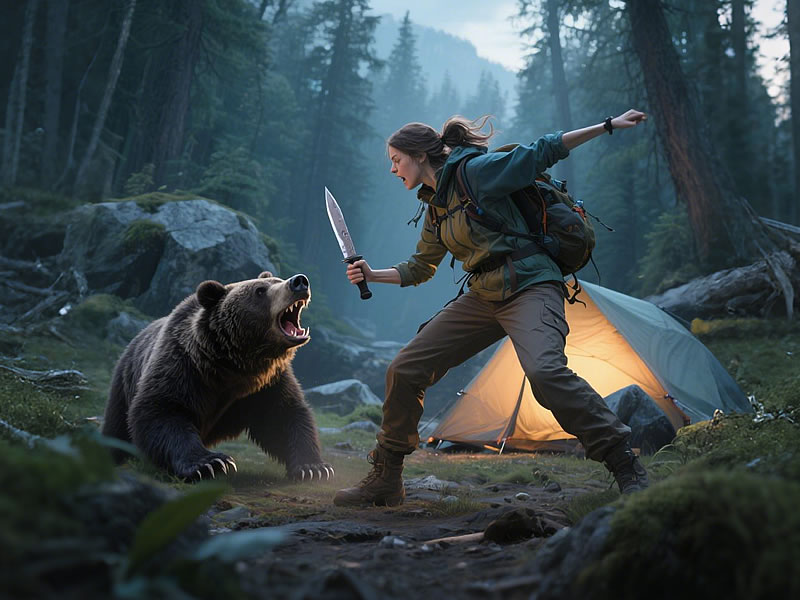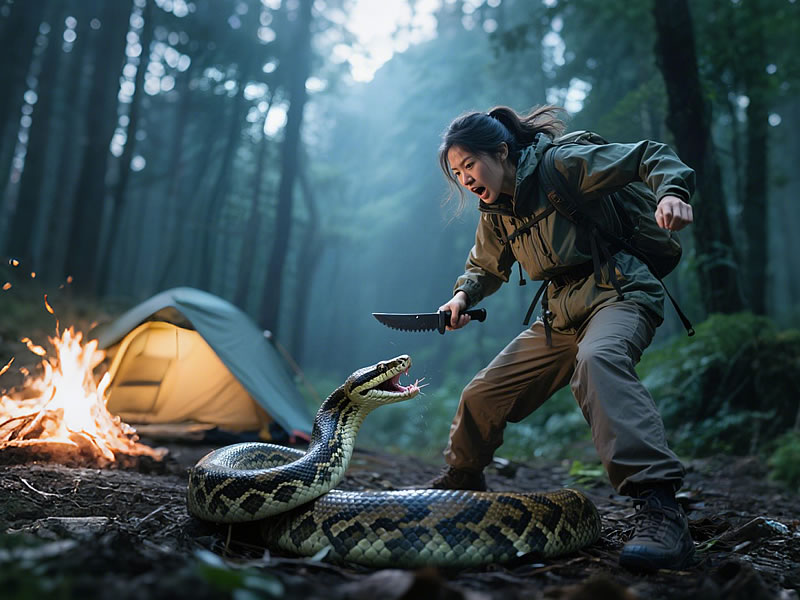Wildlife safety tips for campers (bears, snakes, etc.)
Wildlife Safety Tips for Campers (Bears, Snakes & More): The Complete Guide
Encountering wildlife is one of the most thrilling aspects of camping - until it becomes dangerous. Each year, hundreds of campers face preventable wildlife incidents simply because they weren't prepared. This comprehensive guide covers essential safety protocols for bears, snakes, and other common wildlife encounters to keep you safe in the wilderness.

Bear Safety: Prevention and Response
Food Storage Essentials
- Use bear-proof containers (required in many national parks)
- Hang food 10 feet high and 4 feet from tree trunks
- Never keep food/scented items (toiletries) in your tent
- Cook 100+ yards downwind from sleeping areas
If You Encounter a Bear
- Black Bears:Make yourself look bigSpeak firmly (don't scream)Back away slowly
- Grizzly Bears:Don't run (triggers chase response)Use bear spray at 30-60 feetPlay dead if attacked (lie face down, protect neck)
Pro Tip: Carry bear spray in an accessible holster - not buried in your pack.
Snake Safety: Avoiding Bites
Prevention Strategies
- Wear high-top boots and thick socks
- Use trekking poles to check brush ahead
- Avoid reaching into crevices/blind spots
- Stay on clear trails (especially at night)
If You Spot a Snake

- Freeze immediately
- Back away slowly (most bites occur when provoking)
- Never try to handle or kill it
- Remember: 80% of bites occur on hands/arms
First Aid for Snake Bites
- Keep victim calm (elevate bite below heart level)
- Remove constrictive clothing/jewelry
- Do NOT suck venom or use tourniquet
- Get medical help immediately (take photo of snake if safe)
Other Common Wildlife Hazards
Mountain Lions/Cougars
- Maintain eye contact
- Make yourself look larger
- Throw objects if approached
- Fight back aggressively if attacked
Moose
- More dangerous than bears in some areas
- Give 50+ feet of space
- Run if it charges (unlike bears)
- Use trees as barriers
Rodents & Small Animals
- Secure all food (they carry diseases)
- Check shoes/clothes before dressing
- Never feed wildlife (it's illegal in many parks)
Campsite Wildlife Proofing
- Perimeter check: Look for tracks/scat before setting up
- No food in tents: Not even "just one snack"
- Trash management: Double bag and hang with food
- Clothing care: Don't sleep in clothes you cooked in
- Nighttime protocol: Use flashlight for all bathroom trips
Essential Wildlife Safety Gear
- Bear spray (with practice canister)
- UV flashlight (scorpions glow!)
- Snake gaiters (for high-risk areas)
- Wildlife-proof food storage
- Emergency whistle (deters curious animals)
What Not to Do
❌ Approach animals for photos
❌ Leave pet food bowls outside
❌ Store snacks in your tent vestibule
❌ Hike alone at dawn/dusk (peak activity times)
Regional Considerations
- Southwest: Watch for rattlesnakes & scorpions
- Rockies: Bear country requires extra precautions
- Southeast: Alligator awareness near water
- Pacific Northwest: Cougar territory
Did You Know? Most wildlife attacks occur when people intentionally approach animals. Maintain at least 100 yards from predators and 25 yards from other wildlife.
By following these guidelines, you'll significantly reduce risks while respecting wildlife habitats. Remember: We're visitors in their home. Stay alert, stay prepared, and enjoy observing animals from a safe distance.
Have you had a wildlife encounter while camping? Share your story in the comments!






